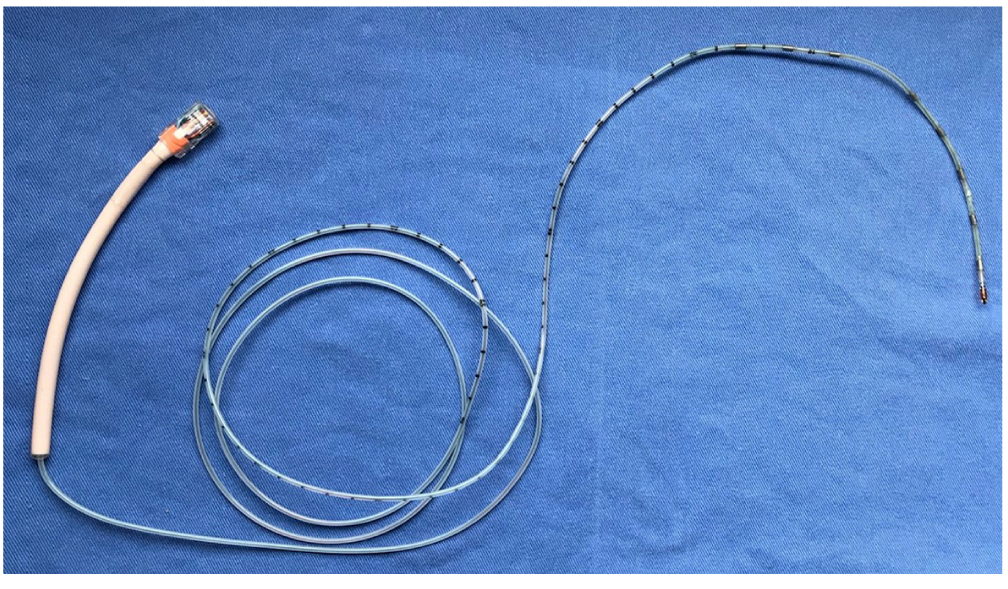Updated interpretation of Impedance–pH monitoring
DOI:
https://doi.org/10.22516/25007440.608Keywords:
pH-impedance monitoring, Gastroesophageal reflux disease, Proton-pump inhibitorAbstract
Gastroesophageal reflux disease (GERD) is defined as the abnormal transit of gastric contents into the esophagus. It is caused by an alteration of the anti-reflux barrier, causing multiple symptoms or complications. In order to achieve accurate diagnosis and proper therapeutic approach, integration of clinical findings, endoscopic findings and 24-hour esophageal pH monitoring, with or without impedancometry, is required. These tests must be performed following technical specifications and their interpretation must be based on the best clinical evidence available to obtain accurate diagnoses that allow making the best decisions to the benefit of patients.
Recently, the Lyon Consensus incorporated new guidelines for the diagnosis of GERD by esophageal pH monitoring, which are reviewed in this paper.
Downloads
References
Vakil N, van Zanten SV, Kahrilas P, Dent J, Jones R; Global Consensus Group. The Montreal definition and classification of gastroesophageal reflux disease: a global evidence-based consensus. Am J Gastroenterol. 2006;101(8):1900-20; quiz 1943. https://doi.org/10.1111/j.1572-0241.2006.00630.x
Patti MG. An Evidence-Based Approach to the Treatment of Gastroesophageal Reflux Disease. JAMA Surg. 2016;151(1):73-8. https://doi.org/10.1001/jamasurg.2015.4233
Cesario S, Scida S, Miraglia C, Barchi A, Nouvenne A, Leandro G, Meschi T, De’ Angelis GL, Di Mario F. Diagnosis of GERD in typical and atypical manifestations. Acta Biomed. 2018;89(8-S):33-39. https://doi.org/10.23750/abm.v89i8-S.7963
Yadlapati R, Pandolfino JE. Personalized Approach in the Work-up and Management of Gastroesophageal Reflux Disease. Gastrointest Endosc Clin N Am. 2020;30(2):227-238. https://doi.org/10.1016/j.giec.2019.12.002
Gyawali CP, Kahrilas PJ, Savarino E, Zerbib F, Mion F, Smout AJPM, Vaezi M, Sifrim D, Fox MR, Vela MF, Tutuian R, Tack J, Bredenoord AJ, Pandolfino J, Roman S. Modern diagnosis of GERD: the Lyon Consensus. Gut. 2018;67(7):1351-1362. https://doi.org/10.1136/gutjnl-2017-314722
Chen J, Brady P. Gastroesophageal Reflux Disease: Pathophysiology, Diagnosis, and Treatment. Gastroenterol Nurs. 2019;42(1):20-28. https://doi.org/10.1097/SGA.0000000000000359
El-Serag HB, Sweet S, Winchester CC, Dent J. Update on the epidemiology of gastro-oesophageal reflux disease: a systematic review. Gut. 2014;63(6):871-80. https://doi.org/10.1136/gutjnl-2012-304269
Páramo-Hernández DB, Albis R, Galiano MT, de Molano B, Rincón R, Pineda-Ovalle LF, Rodríguez A, Otero-Regino W, Hani A, Sabbagh LC, Sandoval-Salinas C, Sánchez-Pedraza R. Prevalencia de síntomas del reflujo gastroesofágico y factores asociados: una encuesta poblacional en las principales ciudades de Colombia. Rev Col Gastroenterol. 2016;31(4):337-346.
Roman S, Gyawali CP, Savarino E, Yadlapati R, Zerbib F, Wu J, Vela M, Tutuian R, Tatum R, Sifrim D, Keller J, Fox M, Pandolfino JE, Bredenoord AJ; GERD consensus group. Ambulatory reflux monitoring for diagnosis of gastro-esophageal reflux disease: Update of the Porto consensus and recommendations from an international consensus group. Neurogastroenterol Motil. 2017;29(10):1-15. https://doi.org/10.1111/nmo.13067
Hong SK, Vaezi MF. Gastroesophageal reflux monitoring: pH (catheter and capsule) and impedance. Gastrointest Endosc Clin N Am. 2009;19(1):1-22, v. https://doi.org/10.1016/j.giec.2008.12.009
Hobbs P, Gyawali CP. The role of esophageal pH-impedance testing in clinical practice. Curr Opin Gastroenterol. 2018;34(4):249-257. https://doi.org/10.1097/MOG.0000000000000441
Ribolsi M, Giordano A, Guarino MPL, Tullio A, Cicala M. New classifications of gastroesophageal reflux disease: an improvement for patient management? Expert Rev Gastroenterol Hepatol. 2019;13(8):761-769. https://doi.org/10.1080/17474124.2019.1645596
Neto RML, Herbella FAM, Schlottmann F, Patti MG. Does DeMeester score still define GERD? Dis Esophagus. 2019;32(5):doy118. https://doi.org/10.1093/dote/doy118
Mainie I, Tutuian R, Shay S, Vela M, Zhang X, Sifrim D, Castell DO. Acid and non-acid reflux in patients with persistent symptoms despite acid suppressive therapy: a multicentre study using combined ambulatory impedance-pH monitoring. Gut. 2006;55(10):1398-402. https://doi.org/10.1136/gut.2005.087668
Aziz Q, Fass R, Gyawali CP, Miwa H, Pandolfino JE, Zerbib F. Esophageal disorders. Gastroenterology. 2016;150(6):1368-79. https://doi.org/10.1053/j.gastro.2016.02.012
Savarino V, Marabotto E, Zentilin P, Furnari M, Bodini G, De Maria C, Tolone S, De Bortoli N, Frazzoni M, Savarino E. Pathophysiology, diagnosis, and pharmacological treatment of gastro-esophageal reflux disease. Expert Rev Clin Pharmacol. 2020;13(4):437-449. https://doi.org/10.1080/17512433.2020.1752664
Hani de Ardila Albis. Pruebas diagnósticas en enfermedad por reflujo gastroesofágico (ERGE). Rev Col Gastroenterol. 2009;24(2):210-222.
Helgadottir H, Bjornsson ES. Problems Associated with Deprescribing of Proton Pump Inhibitors. Int J Mol Sci. 2019;20(21):5469. https://doi.org/10.3390/ijms20215469
Lødrup AB, Reimer C, Bytzer P. Systematic review: symptoms of rebound acid hypersecretion following proton pump inhibitor treatment. Scand J Gastroenterol. 2013;48(5):515-22. https://doi.org/10.3109/00365521.2012.746395
Waldum HL, Qvigstad G, Fossmark R, Kleveland PM, Sandvik AK. Rebound acid hypersecretion from a physiological, pathophysiological and clinical viewpoint. Scand J Gastroenterol. 2010;45(4):389-94. https://doi.org/10.3109/00365520903477348

Downloads
Published
How to Cite
Issue
Section
License
Aquellos autores/as que tengan publicaciones con esta revista, aceptan los términos siguientes:
Los autores/as ceden sus derechos de autor y garantizarán a la revista el derecho de primera publicación de su obra, el cuál estará simultáneamente sujeto a la Licencia de reconocimiento de Creative Commons que permite a terceros compartir la obra siempre que se indique su autor y su primera publicación en esta revista.
Los contenidos están protegidos bajo una licencia de Creative Commons Reconocimiento-NoComercial-SinObraDerivada 4.0 Internacional.

| Article metrics | |
|---|---|
| Abstract views | |
| Galley vies | |
| PDF Views | |
| HTML views | |
| Other views | |















